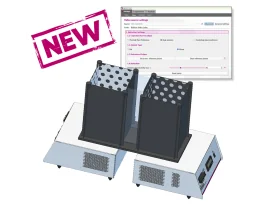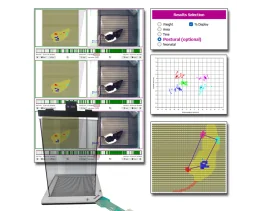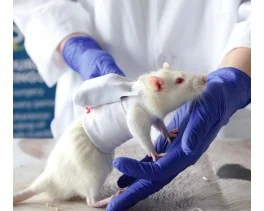Authors
Nabil El Bitar , Bernard Pollin , Elias Georges Karroum , Ivanne Pincedé , Andre Mouraux , Daniel Le Bars
Lab
INSERM, Paris, France
Journal
Journal of Neurophysiology
Abstract
The tail and paws in rodents are heat exchangers involved in the maintenance of core body temperature. They are also the most widely used target organs to study acute or chronic models of pain. We describe the fluctuations of vasomotor tone in the tail and paws in conditions of thermal neutrality and the constraints of these physiological processes on the responses to thermal nociceptive stimuli commonly used as an index of pain. Skin temperatures were recorded with a calibrated thermal camera to monitor changes of vasomotor tone in the tail and paws of awake and anaesthetized rats. In thermo-neutral conditions, the sympathetic tone fluctuated at a rate of 2-7 cycles/hour. Increased arterial blood pressure (~ 46 mmHg) was followed by increased heart rate (~ 45 bpm) in half a minute, vasoconstriction of extremities (3.5-7°C range) within 3-5 minutes, and increased core temperature (~ 0.7°C) within 6 minutes. Decreased arterial blood pressure was followed by opposite events. There was a high correlation between heart rate and core body temperature recorded 5-6 minutes later. The reaction time of the animal's response to a radiant thermal stimulus - heat ramp (6°C/s, 20 mm2 spot) generated by a CO2 laser - directed to the tail, was strongly dependent of these variations. Consequently, the fluctuations in tail and paw temperature thus represent a serious confound for nociceptive tests, particularly when they are conducted at thermal neutrality.
Source :
http://jn.physiology.org/content/early/2014/07/07/jn.00721.2013

 Douleur - Allodynie/Hyperalgésie Thermique
Douleur - Allodynie/Hyperalgésie Thermique Douleur - Spontanée - Déficit de Posture
Douleur - Spontanée - Déficit de Posture Douleur - Allodynie/Hyperalgésie Mécanique
Douleur - Allodynie/Hyperalgésie Mécanique Apprentissage/Mémoire - Attention - Addiction
Apprentissage/Mémoire - Attention - Addiction Physiologie & Recherche Respiratoire
Physiologie & Recherche Respiratoire




































 Douleur
Douleur Système Nerveux Central (SNC)
Système Nerveux Central (SNC)  Neurodégénérescence
Neurodégénérescence Système sensoriel
Système sensoriel Système moteur
Système moteur Troubles de l'humeur
Troubles de l'humeur Autres pathologies
Autres pathologies Système musculaire
Système musculaire Articulations
Articulations Métabolisme
Métabolisme Thématiques transversales
Thématiques transversales Congrès & Meetings
Congrès & Meetings